The Intel 6th Gen Skylake Review: Core i7-6700K and i5-6600K Tested
by Ian Cutress on August 5, 2015 8:00 AM ESTSkylake's iGPU: Intel Gen9
Both the Skylake processors here use Intel’s HD 530 graphics solution. When I first heard the name, alarm bells went off in my head with questions: why is the name different, has the architecture changed, and what does this mean fundamentally?
Not coming up with many details, we did the obvious thing – check what information comes directly out of the processor. Querying HD 530 via Intel's OpenCL driver reports a 24 EU design running at 1150 MHz. This is different than what GPU-Z indicates, which points to a 48 EU design instead, although GPU-Z is not often correct on newer graphics modules before launch day. We can confirm that this is a 24 EU design, and this most likely follows on from Intel’s 8th Generation graphics in the sense that we have a base GT2 design featuring three sub-slices of 8 EUs each.
As far as we can tell, Intel calls the HD 530 graphics part of its 9th Generation (i.e. Gen9). We have been told directly by Intel that they have changed their graphics naming scheme from a four digit (e.g. HD4600) to a three digit (HD 530) arrangement in order "to minimize confusion" (direct quote). Personally we find that it adds more confusion, because the HD 4600 naming is not directly linked to the HD 530 naming. While you could argue that 5 is more than 4, but we already have HD 5200, HD 5500, Iris 6100 and others. So which is better, HD 530 or HD 5200? At this point it will already create a miasma of uncertainty, probably exaggerated until we get a definite explanation of the stack nomenclature.
Naming aside, Generation 9 graphics comes with some interesting enhancements. The slice and un-slice now have individual power and clock domains, allowing for a more efficient use of resources depending on the load (e.g. some un-slice not needed for some compute tasks). This lets the iGPU better balance power usage between fixed-function operation and programmable shaders.
Generation 9 will support a feature called Multi Plane Overlay, which is a similar feature to AMD’s video playback path adjustments in Carrizo. The principle here is that when a 3D engine has to perform certain operations to an image (blend, resize, scale), the data has to travel from the processor into DRAM then to the GPU to be worked on, then back out to DRAM before it hits the display controller, a small but potentially inefficient operation in mobile environments. What Multi Plane Overlay does is add fixed function hardware to the display controller to perform this without ever hitting the GPU, minimizing power consumption from the GPU and taking out a good portion of DRAM data transfers. This comes at a slight hit for die area overall due to the added fixed function units.
As shown above, this feature will be supported on Win 8.1 with Skylake’s integrated graphics. That being said, not all imaging can be moved in this way, but where possible the data will take the shorter path.
To go along with the reduced memory transfer, Gen9 has support for memory color stream compression. We have seen this technology come into play for other GPUs, where by virtue of fixed function hardware and lossless algorithms this means that smaller quantities of image and texture data is transferred around the system, again saving power and reducing bandwidth constraints. The memory compression is also used with a scalar and format conversion pipe to reduce the encoding pressure on the execution units, reducing power further.
Adding into the mix, we have learned that Gen9 includes a feature called the ‘Camera Pipe’ for quick standard adjustments to images via hardware acceleration. This adjusts the programmable shaders to work in tandem for specific DX11 extensions on common image manipulation processes beyond resize/scale. The Camera Pipe is teamed with SDKs to help developers connect into optimized imaging APIs.
Media Encoding & Decoding
In the world of encode/decode, we get the following:
Whereas Broadwell implemented HEVC decoding in a "hybrid" fashion using a combination of CPU resources, GPU shaders, and existing GPU video decode blocks, Skylake gets a full, low power fixed function HEVC decoder. For desktop users this shouldn't impact things by too much - maybe improve compatibility a tad - but for mobile platforms this should significantly cut down on the amount of power consumed by HEVC decoding and increase the size and bitrate that the CPU can decode. Going hand-in-hand with HEVC decoding, HEVC encoding is now also an option with Intel's QuickSync encoder, allowing for quicker HEVC transcoding, or more likely real-time HEVC uses such as video conferencing.
Intel is also hedging their bets on HEVC by also implementing a degree of VP9 support on Skylake. VP9 is Google's HEVC alternative codec, with the company pushing it as a royalty-free option. Intel calls VP9 support on Skylake "partial" for both encoding and decoding, indicating that VP9 is likely being handled in a hybrid manner similar to how HEVC was handled on Broadwell.
Finally, JPEG encoding is new for Skylake and set to support images up to 16K*16K.
Video Support
The analog (VGA) video connector has now been completely removed from the CPU/chipset combination, meaning that any VGA/D-Sub video connection has to be provided via an active digital/analog converter chip. This has been a long time coming, and is part of a previous committment made by Intel several years ago to remove VGA by 2015. Removing analog display functionality will mean added cost for legacy support in order to drive analog displays. Arguably this doesn’t mean much for Z170 as the high end platform is typically used with a discrete graphics card that has HDMI or DisplayPort, but we will see motherboards with VGA equipped in order to satisfy some regional markets with specific requirements.
HDMI 2.0 is not supported by default, and only the following resolutions are possible on the three digital display controllers:
A DP to HDMI 2.0 converter, specifically an LS-Pcon, is required to do the adjustments, be it on the motherboard itself or as an external adapter. We suspect that there will not be many takers buying a controller to do this, given the capabilities and added benefits listed by the Alpine Ridge controller.


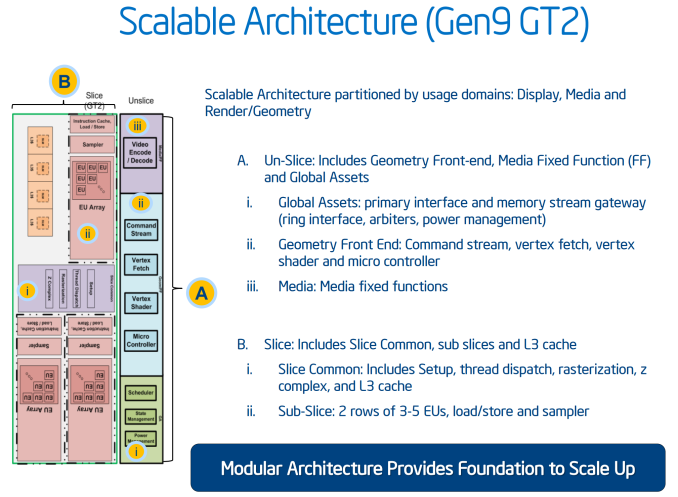
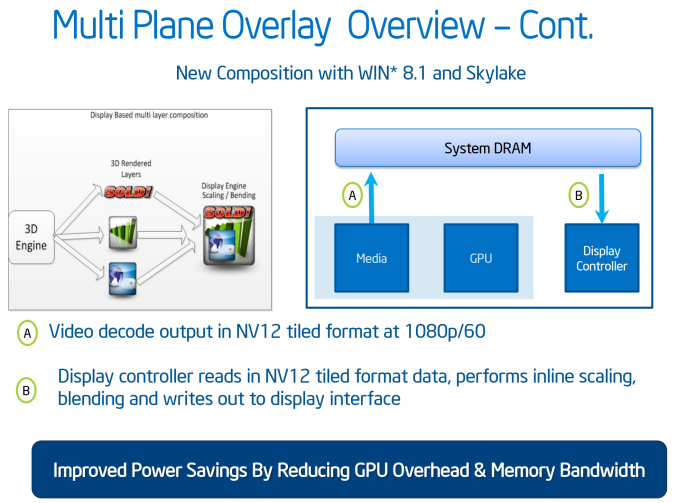
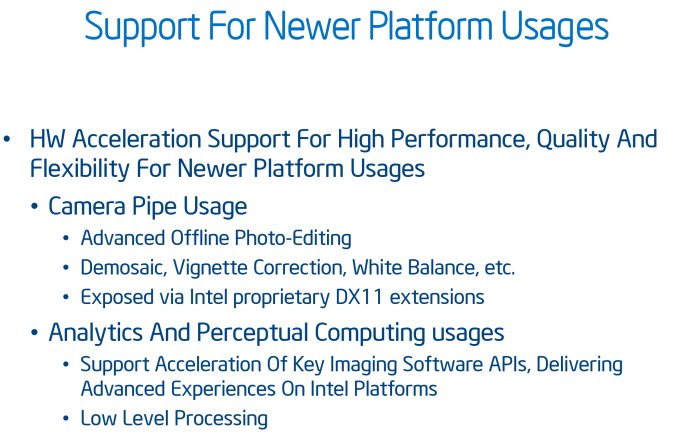

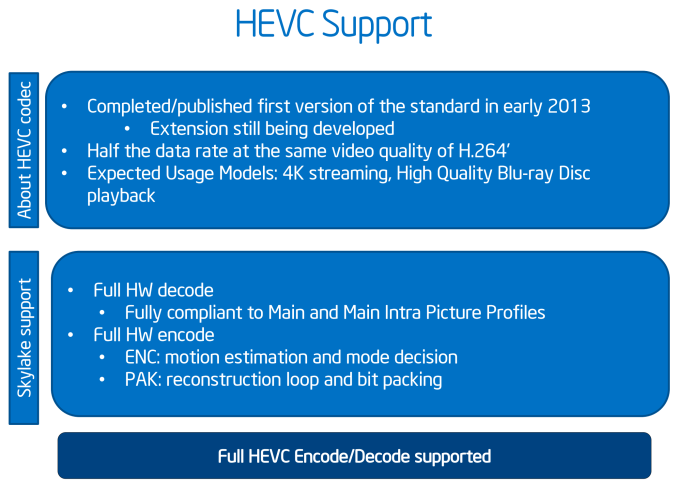
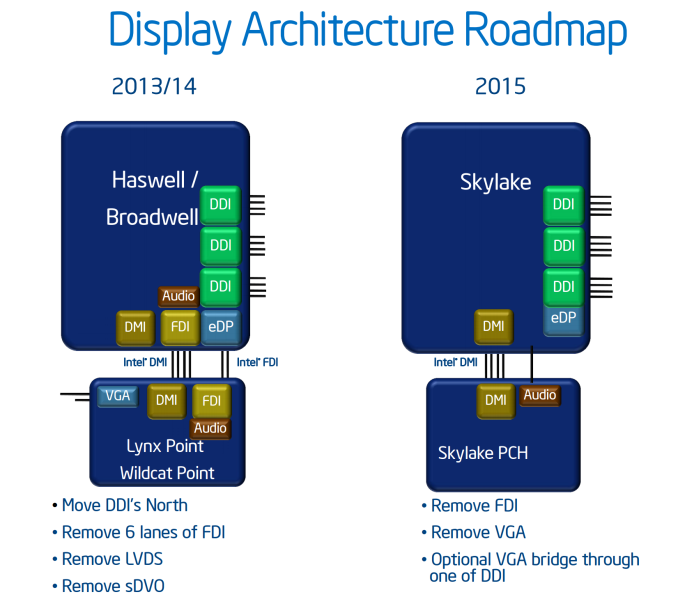









477 Comments
View All Comments
Chaser - Thursday, August 6, 2015 - link
Now even more pleased with my 5820K rig I bought two months ago.Artas1984 - Thursday, August 6, 2015 - link
I disagree with the statement that Skylake should now be a definitive replacement for Sandy Bridge.It's like saying that your game runs at 200 FPS slowly, so now you have to upgrade to get 250 FPS. Of course i am not talking about games directly, it's a metaphor, but you get the point.
Also with the way how fast computer electronics develop, people are "forced" to up their quality of life at the expense of buying more important things in this short fu+kin life. Just because there are things manufactured does not mean you have to live someone else's life! I for one give a shit about smart phones and will never use them anyway, i will never use 3D googles or monitors in movies or gaming just because they exist.
On top of that:
AMD's chips have not yet reached the performance levels of Sandy Bridge. The piece of crap FX 9590 falls behind 2600K in every multi-threaded bench and get's beaten by 2500K in every game!
Oxford Guy - Friday, August 7, 2015 - link
Take a look at this: http://www.techspot.com/review/1006-the-witcher-3-...Oxford Guy - Friday, August 7, 2015 - link
It seems there's a reason why Anandtech never puts the FX chips into its charts and instead chooses the weak APUs... Is it because the FX is holding its own nicely now that games like Witcher 3 are finally using all of its threads?Oxford Guy - Friday, August 7, 2015 - link
A 2012 chip priced as low as $100 (8320E) with a $40 motherboard discount (combo with UD3P set me back a total of $133.75 with tax from Microcenter a few months ago) is holding its own with i7 chips when overclocked, and at least i5s. Too bad for AMD that they released that chip so many years before the gaming industry would catch up. Imagine if it was on 14nm right now instead of 32.boeush - Friday, August 7, 2015 - link
Oh yeah, real impressive: FX 9590 @ 4.7 Ghz is a whole 1% faster than the 4 year old i5 2500K @ 3.3 Ghz. I'm blown away... Particularly since the 9590 overclocks to maybe 5 Ghz if you are lucky, at 200 W with water cooling, while the 2500K overclocks to 4.5 Ghz on air. And it's not as if that game isn't GPU limited like most of the others...Fanboi, please.
Oxford Guy - Friday, August 7, 2015 - link
You're missing the point completely, but that's OK. Anyone who looks at the charts can figure it out for themselves, as the reviewer noted. Also, if you would have taken the time to look at that page before spouting off nonsense, you would have noticed that a high clock rate is not necessary for that chip to have decent performance -- negating the entire argument that extreme overclocking is needed. The game clearly does a better job of load balancing between the 8 threads than prior games have, resulting in a much more competitive situation for the FX (especially the 8 thread FX).As for being a fanboy. A fanboy is someone who won't put in an FX and instead just puts in a bunch of weaker APUs, the same thing that has been happening in multiple reviews. Name-calling is not a substitute for actually looking at the data I cited and responding to it accurately.
Markstar - Friday, August 7, 2015 - link
I totally agree - looking at the numbers it is very obvious to me that upgrading is not worth it unless you are heavily into video encoding. Especially for gaming, spending the money on a better graphic card is clearly the better investment as the difference is usually between 1-3%.My i5-2500K is "only" at 4.5GHz and I don't see myself upgrading anytime soon, though I have put some money aside for exactly that purpose.
sonny73n - Friday, August 7, 2015 - link
I don't agree with your bold statement: "Sandy Bridge, your time is up". Why do you even compare Skylake and SB K series at their stock speeds? I have my i5-2500K at 4.2GHz now with Prime95 stress test max temp at 64C on air cool. I can easily clock it to 4.8GHz and I have so but never felt the need for that high of clocks. With ~25% overall system improvement in benchmarks and only 3 to 5% in games, this upgrade doesn't justify the cost of a new MB, DDR4 and CPU. I'm sure a few people can utilize this ~25% improvement but I doubt it would make any difference for me on my daily usage. Secondly, Skylake system alone can't run games. Why upgrade my SB when it can run all the games with Evga 780 that I wanted it to? For gamers, wouldn't it be a lot wiser and cheaper to spend on another 780 instead of spending on a new system? And all that upgrade cost is just for 3 to 5% improvement in games? Sorry, I'll pass.MrSpadge - Friday, August 7, 2015 - link
Ian, when testing the memory scaling or comparing DDR3 and 4 you shouldn't underclock the CPUs. Fixing their frequency is good, but not reducing it. The reason: at lower clock speeds the throughput is reduced, which in turn reduces the need for memory bandwidth. At 3 vs. 4 GHz we're already talking about approximately 75% the bandwidth requirement that a real user would experience. In this case memory latency still matters, of course, but the advantage of higher bandwidth memory is significantly reduced.